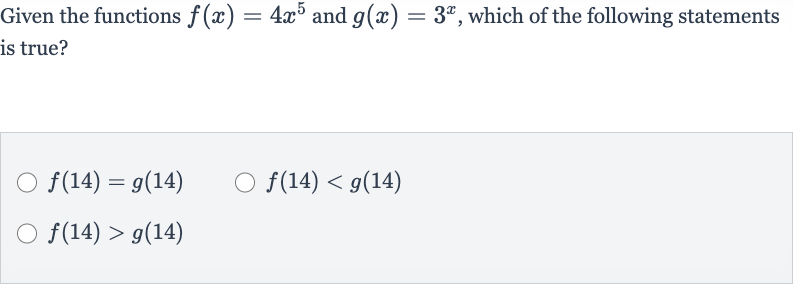Full solution
Q. Given the functions and , which of the following statements is true?
- Calculate : Calculate using the function .
- Calculate : Calculate using the function .
- Compare and : Compare and to determine which statement is true.Since and , it is clear that f(14) < g(14).
More problems from Solve quadratic inequalities
QuestionGet tutor help
QuestionGet tutor help
QuestionGet tutor help
QuestionGet tutor help
QuestionGet tutor help
QuestionGet tutor help
QuestionGet tutor help
QuestionGet tutor help

